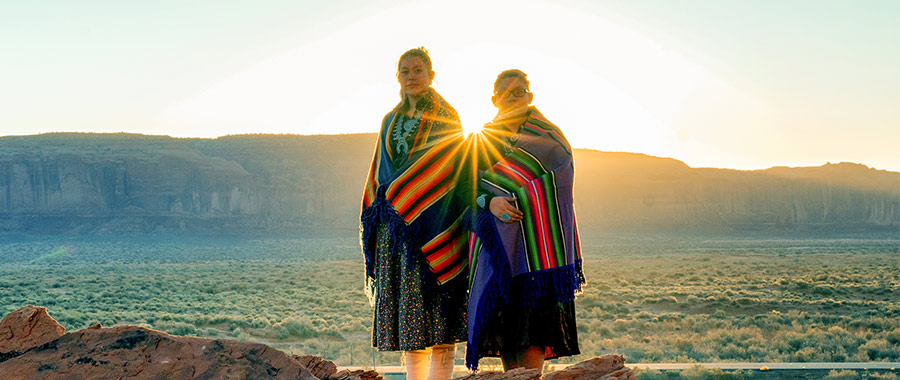In exploring the intricate tapestry of spirituality, the confluence of Navajo and Baha’i teachings emerges as a profound discourse that invites contemplation and understanding. Both traditions, though distinct in their cultural and historical contexts, illuminate the paths individuals tread in pursuit of spiritual enlightenment. This dialogue between two heritages not only underscores their unique philosophies but also reflects a universal yearning for connection, harmony, and meaning.
The Navajo teachings, rooted in a rich cultural heritage, encapsulate a holistic worldview that emphasizes the interrelationship of all life forms. Central to Navajo spirituality is the concept of “harmony” or “Hózhó,” a term that extends beyond mere balance; it embodies a state of beauty, peace, and respect for one’s environment. In contrast, the Baha’i teachings, emergent from the 19th century, advocate for the unity of all humanity, positing that spiritual and social progress are inherently linked. The Baha’i perspective emphasizes the oneness of God and the progressive revelation of divine wisdom through various prophets across time.
At the heart of both spiritual wisdoms is the metaphor of the “woven tapestry.” Just as a tapestry comprises various threads—each with its own color, texture, and significance—so too do the teachings of the Navajo and Baha’i traditions coalesce into a singular narrative of interconnectedness. In this artistic metaphor, the distinct patterns signify the diverse teachings attributed to each tradition, yet the overall fabric reveals a harmonious design that celebrates diversity through unity.
A pivotal element in Navajo teachings is the relationship to the land. The sacred bond between the Navajo people and their surroundings is emblematic of their understanding of the Spirit—known as “Dine’é.” This spiritual presence is thought to permeate the natural world, creating a sense of reverence for the earth and all its creations. Consequently, rituals and ceremonies are deeply intertwined with the cycles of nature, establishing a sacred rhythm that embodies respect for creation.
In a similar vein, the Baha’i concept of the “Earth as One Country” resonates with themes found within Navajo beliefs. Baha’is advocate for global stewardship, emphasizing the crucial need to nurture and protect the planet. The metaphor of “the globe as a single garden” encapsulates this ethos, wherein humanity is called to cultivate peace and cooperation—an extension of the reverence inherent in the Navajo relationship with the land. Here, both traditions converge, suggesting that a profound respect for the earth is not only an ecological imperative but also a spiritual obligation.
Furthermore, communal practices within both traditions highlight the role of collective consciousness in spiritual development. In Navajo culture, ceremonies, such as the Night Chant or the Blessingway, serve as communal gatherings that reinforce social bonds while invoking healing and balance. These rituals are manifestations of the belief that individual well-being is inextricably linked to the health of the community and the natural world.
Conversely, the Baha’i community places significant emphasis on collective worship and service. The Baha’i institutions promote collaboration and consultation, acknowledging that diverse perspectives enrich the decision-making process. This focus on community mirrors the Navajo tradition’s reverberation of interconnectedness. Both cultures recognize that spiritual growth is often cultivated through shared experiences, a principle that transcends cultural boundaries and encourages a unified approach to human development.
To distill the essence of these teachings is to understand the underlying principles of love and unity. Navajo spirituality often manifests in the form of stories and teachings that foster connections among individuals and their surroundings. Similarly, Baha’i writings are replete with exhortations for love, compassion, and understanding among all peoples. Each tradition, in its unique narrative style, enacts the universal call for the elevation of humanity—through acts of kindness, forgiveness, and justice.
In examining the educational dimensions of both traditions, one finds profound similarities in their emphases on moral development and the inculcation of virtues. The Navajo teachings promote values such as honesty, integrity, and respect—qualities essential not only for individual character but for the health of the community. Baha’i teachings echo this sentiment, accentuating the importance of cultivating virtues such as compassion, altruism, and unity. This parallel reveals a shared understanding that spiritual education must transcend mere knowledge; it must endeavor to shape the moral fiber of society.
Moreover, the metaphorical concept of the “journey” serves as a potent emblem within both teachings. The Navajo idea of traversing life’s paths resonates with the spiritual journey depicted in Baha’i writings, where each individual’s quest for truth is likened to a pilgrimage toward enlightenment. In both narratives, the journey is not simply a physical movement but an inward exploration—a continual striving toward higher consciousness and divine realization.
In conclusion, the teachings of the Navajo and Baha’i traditions, while distinct in their cultural expressions, unite through an intricate interplay of shared metaphors, communal responsibilities, and unconditional love. By examining these twin spiritual perspectives, individuals may glean invaluable insights into their own spiritual pursuits. As humanity navigates the complexities of existence, embracing the wisdom of both traditions can foster a sense of belonging and purpose, thereby enriching the collective human experience. Each teaching, like a unique strand in a grand tapestry, contributes to a vibrant whole—a brilliant expression of the unyielding quest for meaning, harmony, and unity in the universe.
